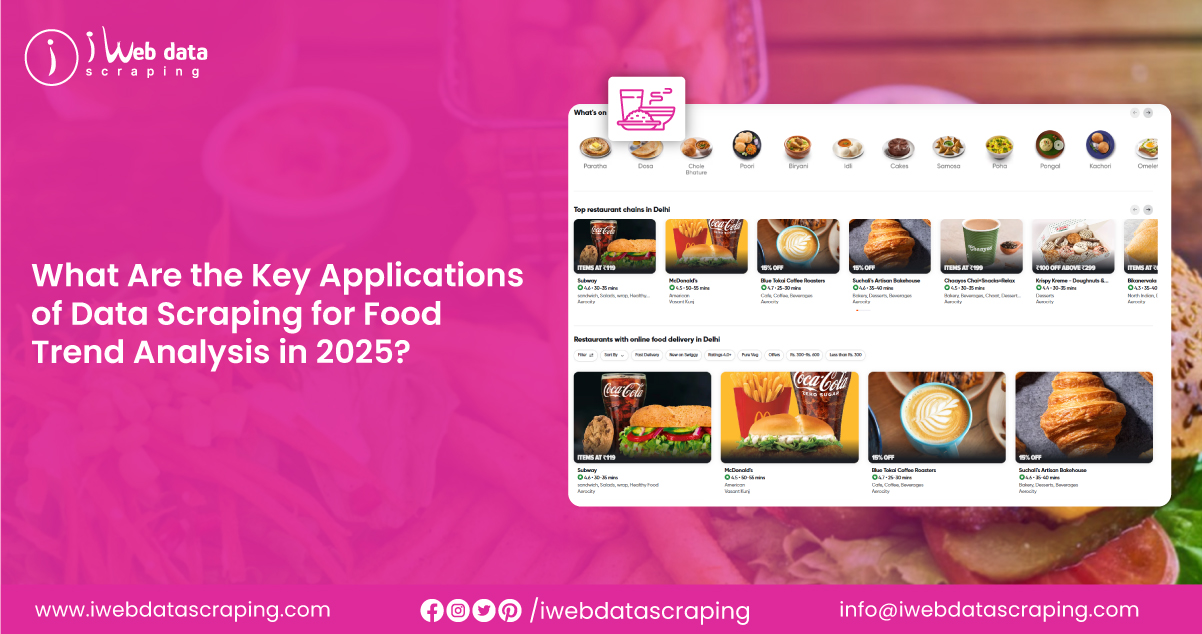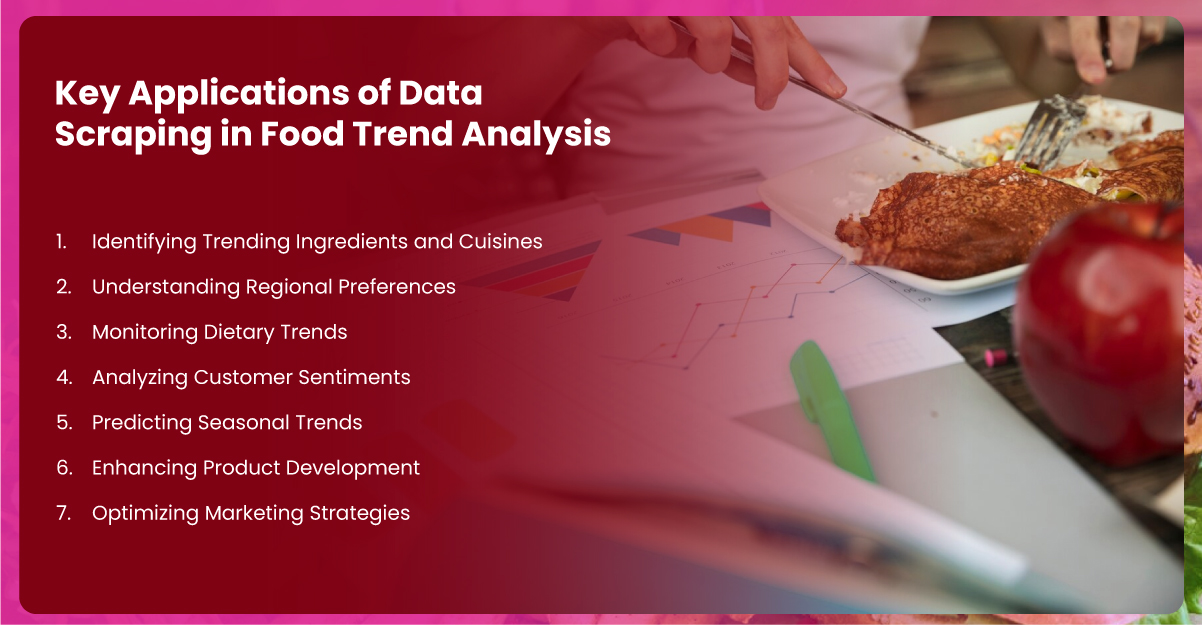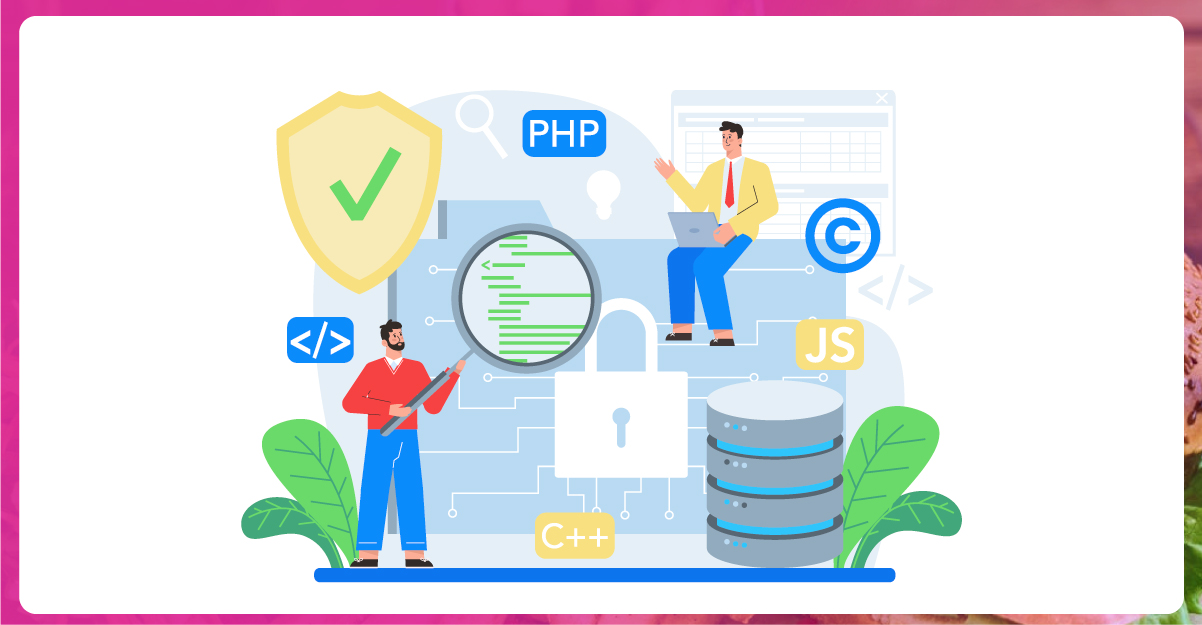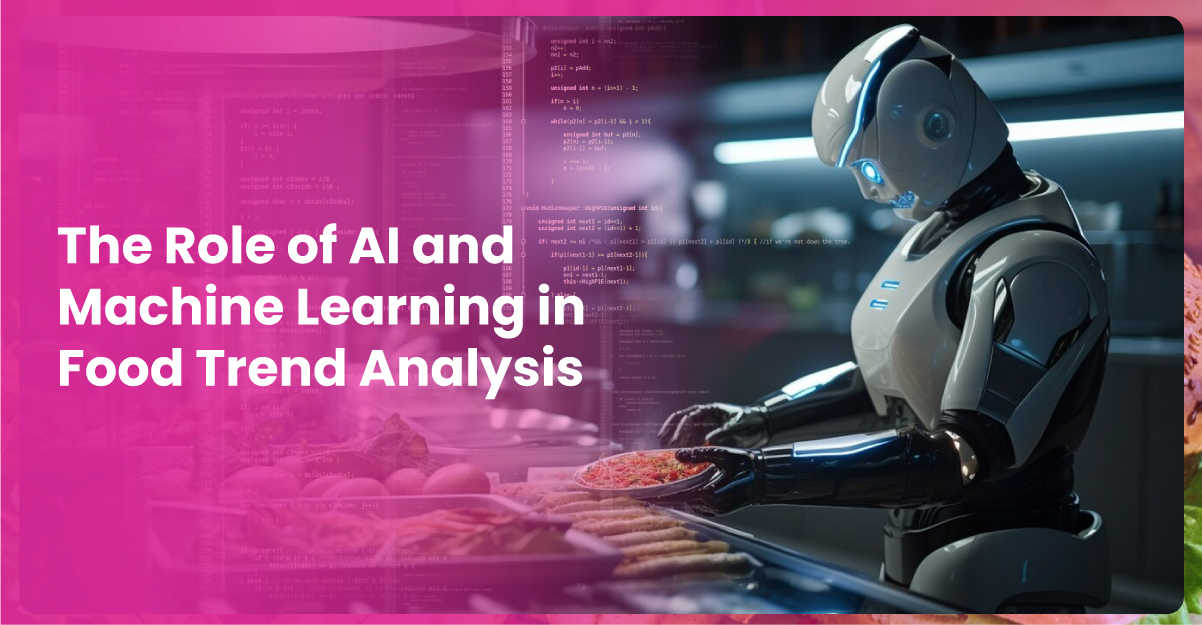

As consumer preferences evolve rapidly, tracking food trends has become crucial for businesses in the food and beverage sector. Entering 2025, data scraping for food trend analysis is revolutionizing the industry, enabling companies to gather real-time insights into what people eat, drink, and crave. From restaurants and grocery stores to food delivery platforms and recipe websites, food industry trends using web scraping provide valuable data to stay ahead of emerging preferences. By extracting data from various online sources, businesses can quickly identify popular ingredients, shifting dietary habits, and seasonal demands. This ability to analyze vast amounts of data in real-time allows companies to adapt and innovate faster. This article explores the growing importance of data scraping in uncovering food trends, its diverse applications, and its profound impact on shaping the future of the food industry.
Consumer preferences, cultural shifts, health consciousness, and global influences shape the food industry. A well-timed understanding of emerging trends can give businesses a competitive edge by enabling them to adapt their offerings, optimize supply chains, and effectively target customers. For instance, the sudden rise of plant-based diets and alternative proteins in recent years caught many off guard. Companies that quickly responded to this trend reaped substantial benefits.
In Food trends tracking 2025, the importance of staying on top of evolving preferences has only grown. With social media platforms amplifying niche tastes and viral trends, businesses must adopt advanced methods to capture the pulse of consumers. Traditional market research, while still valuable, is no longer sufficient. Real-Time Food Trends Data Extraction from multiple online platforms offers a faster, more comprehensive, and cost-effective way to track trends, allowing businesses to adapt in real-time and stay ahead of the competition.
Data or web scraping is collecting publicly available information from websites. This information is then organized and analyzed to uncover patterns, trends, and actionable insights. In the food industry, data scraping can collect information from sources such as:
The sheer volume and diversity of data available make scraping a powerful tool for businesses looking to stay relevant in a dynamic market.

Data scraping offers valuable insights for food trend analysis by tracking consumer preferences, identifying emerging dietary habits, and analyzing market dynamics. It empowers businesses to stay ahead of trends, optimize product offerings, and make data-driven decisions for growth and innovation.
1. Identifying Trending Ingredients and Cuisines
With the rise of global food culture, new ingredients, and cuisines frequently emerge as consumer favorites. Data scraping allows businesses to monitor recipe websites, food blogs, and social media platforms for mentions of trending ingredients like gochujang, jackfruit, or moringa. This information can help manufacturers and chefs introduce innovative products or dishes that align with consumer preferences.
2. Understanding Regional Preferences
Consumer tastes often vary by region due to cultural, climatic, and demographic factors. By scraping data from local restaurant menus and reviews, businesses can tailor their offerings to specific markets. For instance, a fast-food chain could introduce spicier options in regions that prefer bold flavors.
3. Monitoring Dietary Trends
Health and wellness continue to influence consumer choices. Whether it’s keto, paleo, gluten-free, or plant-based diets, data scraping can track the rise and fall of dietary preferences. Businesses can use this information to develop products that cater to specific health-conscious audiences, such as low-carb snacks or vegan desserts.
4. Analyzing Customer Sentiments
Online reviews and social media posts are treasure troves of customer sentiments. By analyzing this data, businesses can identify pain points, such as dissatisfaction with portion sizes or complaints about food quality. Conversely, they can also pinpoint what customers love about their offerings, enabling them to replicate success.
5. Predicting Seasonal Trends
Many food trends are seasonal. Pumpkin spice products dominate in the fall, while fresh fruits and salads see a surge in summer. Data scraping helps businesses predict these patterns by analyzing historical data and online buzz, ensuring they’re prepared to meet seasonal demand.
6. Enhancing Product Development
Data scraping can provide insights into the development of new products. For example, if a particular dessert type is trending on Instagram, bakeries, and confectioners can create versions to capitalize on the buzz.
7. Optimizing Marketing Strategies
Knowing what’s popular allows businesses to design targeted marketing campaigns. For instance, if data scraping reveals that a specific dish is gaining traction, restaurants can promote it as a unique item or include it in meal deals.

While data scraping offers immense potential, it raises ethical and legal questions. Businesses must ensure they adhere to the following principles:
By following these guidelines, businesses can leverage data scraping responsibly and sustainably.

In 2025, integrating artificial intelligence (AI) and machine learning (ML) with data scraping will revolutionize food trend analysis. AI-powered algorithms can process vast amounts of data in real-time, accurately identifying patterns and predicting trends. For example:
These technologies enhance the efficiency and accuracy of data scraping, giving businesses deeper insights and a significant competitive advantage.
Despite its advantages, data scraping is not without challenges. Some of the key hurdles include:
Addressing these challenges requires technical expertise, ethical practices, and strategic planning.
As we move into 2025, the potential for data scraping in tracking food trends continues to expand. Emerging technologies like blockchain can enhance transparency in the food supply chain, while advancements in IoT devices may provide real-time data on consumer behavior. Additionally, the rise of localized food movements and sustainability-focused initiatives will create new avenues for trend analysis.
Businesses' ability to adapt to these changes will determine their success. Investing in data scraping capabilities and integrating them with broader analytics frameworks will be crucial for staying ahead of the competition. Leveraging insights from a Food Delivery App Dataset will enable businesses to monitor customer preferences, optimize delivery logistics, and effectively tailor offerings to meet demand.
Tracking food trends with data scraping is no longer optional—it’s essential. Data scraping enables businesses to innovate, optimize, and thrive in an ever-changing industry by providing real-time insights into consumer preferences, dietary habits, and market dynamics. As the food industry becomes increasingly data-driven, the ability to harness the power of Web Scraping Food Delivery Data will define the leaders of tomorrow. By embracing this technology and addressing its challenges responsibly, businesses can meet current consumer demands and anticipate future trends, ensuring long-term growth and relevance. With the power of Food Data Intelligence, companies can gain deeper insights into consumer behavior and market shifts, positioning themselves to lead in the competitive food industry landscape.
Experience top-notch web scraping service and mobile app scraping solutions with iWeb Data Scraping. Our skilled team excels in extracting various data sets, including retail store locations and beyond. Connect with us today to learn how our customized services can address your unique project needs, delivering the highest efficiency and dependability for all your data requirements.